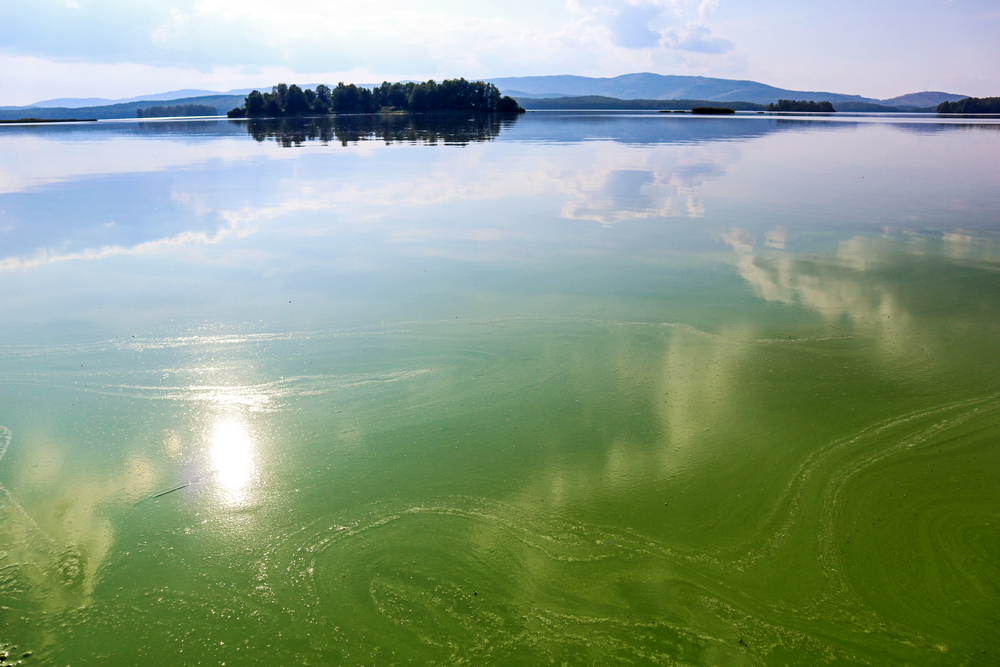Blue-Green Algae Poisoning in Dogs

Standing water like ponds, ditches, and lakes contain debris, scum, protozoa, and bacteria. This can include blue-green algae, or cyanobacteria, a greenish scum that forms on the top of still water. Cyanobacteria is an algae to be concerned about when it comes to your pet’s safety.
Our dogs enjoy getting into anything slimy, muddy, or otherwise gross to us. If your dog loves to swim or enjoys time around water, they are likely to drink from one of these natural water sources. The team at Oakland Veterinary Referral Services wants pet owners to know more about blue-green algae poisoning, so you can better protect your pet.
What Is Blue-Green Algae?
Blue-green algae blooms on the top of the water and thrives in warm, humid climates. We mostly find these algae in the southern United States because of the warmer than average, humid climate. Lately, though, we are seeing this toxicity in northern regions with milder climates. The algae develop on brackish water that contains run-off from fertilizers and in nutrient-rich water that fosters bacteria.
Cyanobacteria look like blue or greenish slime. They grow close to the edge of ponds and small pools of water. Livestock and pet companions usually feel sick once they drink from cyanobacteria-infested water. Commonly affected animals include cattle, sheep, goats, llamas, and horses, as well as dogs and cats (although less likely in cats). Blue-green algae can be deadly for dogs.
Symptoms of Cyanobacteria Toxicity
Blue-green algae produce two types of toxins, microcystins and anatoxins. Symptoms depend on which form of the toxic is involved. Both toxins negatively impact the liver and central nervous system. Common signs of blue-green algae microcystin toxicity are:
- Vomiting
- Diarrhea
- Tarry stool
- Low blood sugar and protein levels
- Jaundice
- Bleeding
- Disorientation
- Seizure
Without immediate treatment, permanent liver damage occurs which leads to liver failure.
Anatoxins affect the central nervous system and can produce fatal symptoms within minutes or hours after exposure. Symptoms of anatoxin exposure include:
- Salivation and tearing
- Inability to walk
- Difficulty breathing
- Tremors
- Muscle rigidity
- Blue discoloration of skin
- Disorientation
- Paralysis
- Coma
Treatment of Blue-Green Algae Poisoning
The severity of this algae toxicity occurs quickly. If you suspect your pet ingested water with toxic blue-green algae, seek treatment at once. Treatment means promptly ridding your pet of the toxin by inducing vomiting. Activated charcoal also helps absorb the toxin but there is no antidote. Recovery can be slow and there is often lingering liver damage and other complications.
Your treating veterinarian will give your pet intravenous fluid therapy and plasma to regulate blood glucose levels and electrolytes. They will monitor for liver function and provide other supportive treatments to prevent organ failure and shock.
Prognosis, unfortunately, with this form of toxicity is generally poor. Because of this, prevention is especially key to keeping your pet safe. Prevent your pet from drinking from or swimming in any ponds, lakes, or water sources that are stagnant. These also include bird baths, fountains, and fish ponds (which should be scrubbed and refilled often).
Please contact our team to learn more about blue-green algae and its threat to our animal companions.


